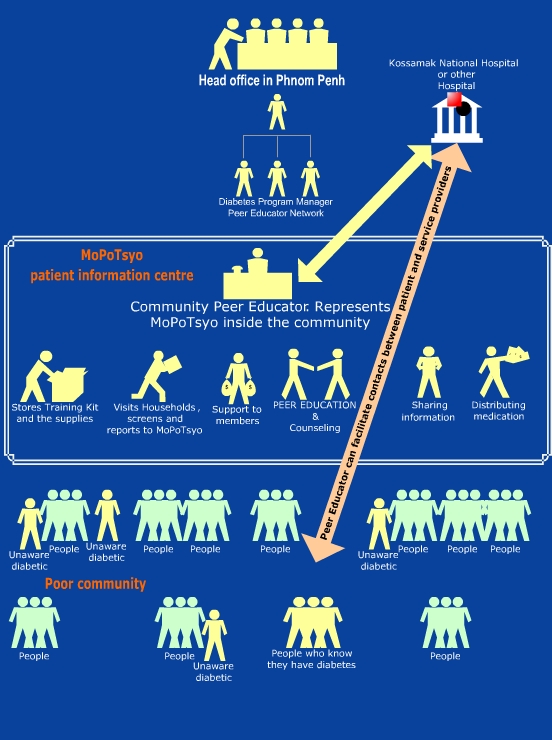
Our Work Happens at 3 Levels
Level 1
Head office
– Advocacy
– Planning
– Communication
– Supervision
– Management
– Quality control
– Support peer educator
– Training
– Reporting to the board
Level 2
Patient information centres have been established in poor urban communities and in rural Operational Districts following the public health map of Ministry of Health. These centres are based at homes of diabetes peer educator and increasingly at Health Centres that cooperate with the Peer Educator. The Peer Educator can go out to identify and support other people with diabetes within the community, that is the population in the area covered by the Health Center where the Peer Educator lives.
Level 3
The general population where the people with diabetes live. This is the population from where the PE recruits and creates a community of patients. It is where the PE raises awareness of risk factors for chronic NCD, and diabetes in particular. The purpose is to find (screening) people who have diabetes but they did not know this. They do this by teaching people how to find glucose in their urine by using urine glucose strip. If people have positive urine glucose then the Peer Educator performs a free Blood Glucose test (fingertip) using a handheld gluco-meter and blood glucose strips. Peer Educators never diagnose diabetes based on urine glucose strip use. The Peer Educator distributes free urine glucose strips for awareness raising and to reduce the barrier to the Blood Glucose test. This activity helps to build trust of the population. diabetes patients in particular, in the rural health centers and the public health system, where they receive most of the chronic care that MoPoTsyo’s peer educators help organize.
